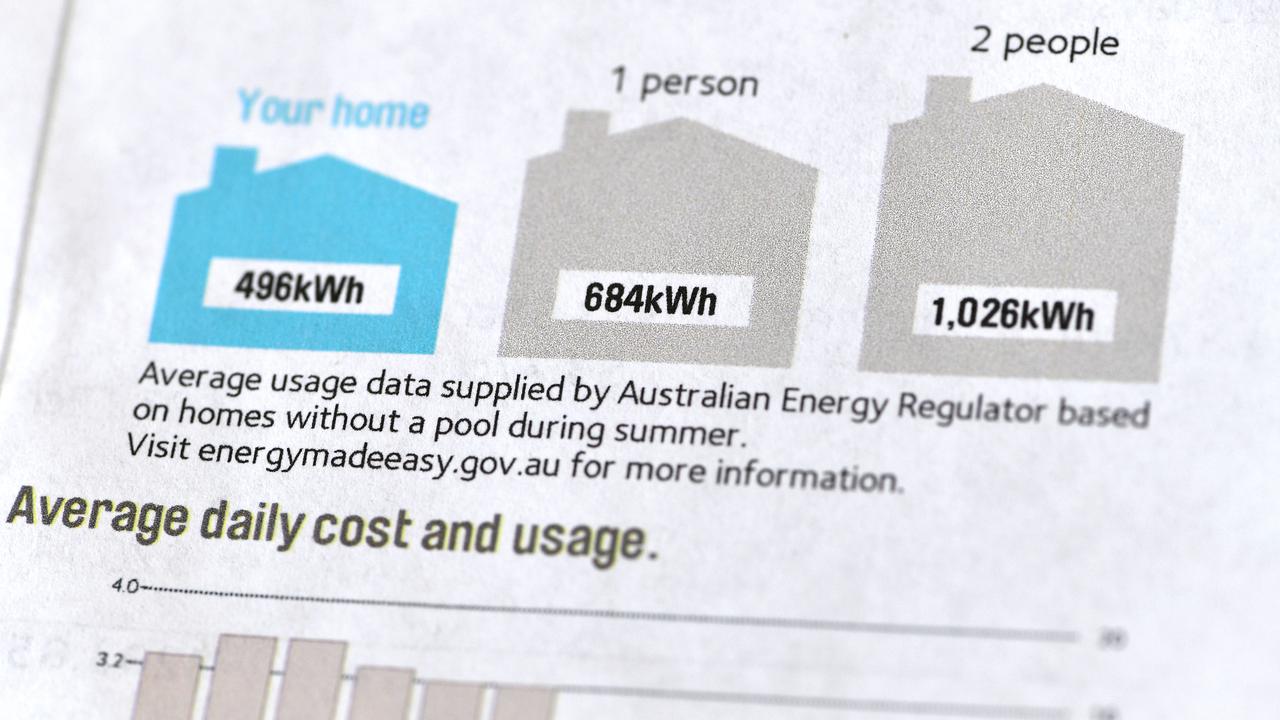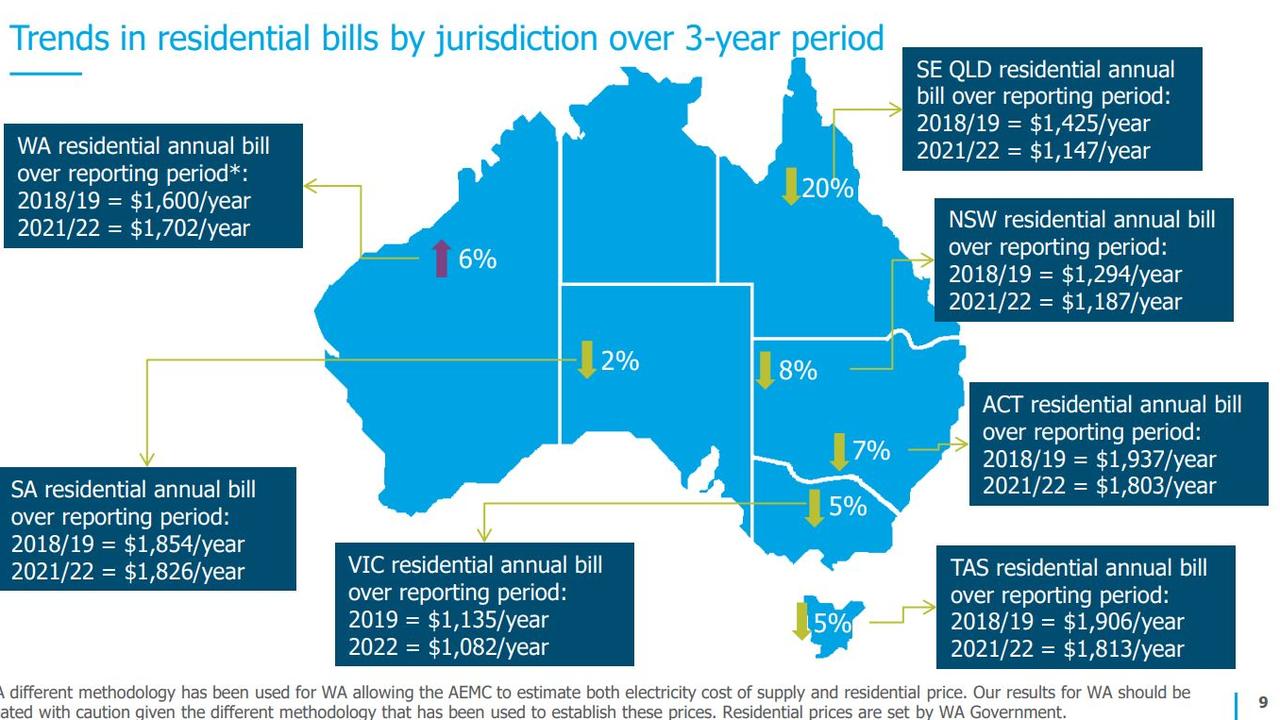Power prices predicted to fall as much as 20 per cent over next three years thanks mostly to renewables
High power prices are sending fear through Aussie families, but there’s good news on the horizon, and one state looks set to win big.
More than half of young Australian families are scared to open their quarterly energy bill and are shocked by the number they see when they do, but if you’re like them there is hope on the horizon.
New forecasting from the Australian Energy Market Commission (AEMC) predicts power prices to come down as much as 20 per cent in all Australian states and territories except for two within the next three years.
The steepest price falls will be in southeast Queensland, where prices are expected to drop from $1425 last financial year to $1147 by the 2021/22 financial year.
While Queensland is by far the biggest winner, prices are also predicted to fall in NSW (8 per cent), the ACT (7 per cent), Victoria (5 per cent), Tasmania (5 per cent), and South Australia (2 per cent).
Averaged out nationally you can expect to save almost $100, but your actual figure will differ depending on where you live, and you might even end up paying more.
RELATED: Billionaires back solar projects

RELATED: Australia well poised for renewable revolution
In Western Australia, prices are forecast to increase by 6 per cent, but the AEMC concedes it might not be an accurate prediction given the state’s government sets the power price.
“A different methodology has been used for WA allowing the AEMC to estimate both electricity cost of supply and residential price,” the commission said under a map of the figures. “Our results for WA should be treated with caution given the different methodology that has been used to establish these prices. Residential prices are set by WA government.”
The commission was unable to get enough data to make predictions for the Northern Territory due to contracts deemed commercial in confidence.
AEMC chair John Pierce said prices would fall thanks to “three key drivers” that determine the number you see on your bill: wholesale, network, and environmental costs.
“Overall, a representative customer will pay around $97 less than today by June 2022,” Mr Pierce said.
An extra 5000 megawatts of new supply – mostly in the form of renewable energy – is expected to come into the market by that time.
Environmental costs, which account for about 6.5 per cent of your current bill, or a representative average of $90 a year, are expected to fall nearly 24 per cent as incentives and subsidies for renewable energy sources are phased out.
New renewables projects coming online are also expected to add supply and push down generation prices by almost 12 per cent.
Energy Minister Angus Taylor said the AEMC report “confirms the government’s plan to deliver a fair deal on energy is working”.

Changes made to the National Energy Market, which covers all of Australia except for the NT and WA (where prices aren’t forecast to fall), were “designed to put downward pressure on wholesale prices and deliver more reliable power to the grid to ensure the reliable, 24/7 affordable power that Australian families and businesses deserve”, Mr Taylor said.
It comes as separate research finds more than half of young Australian families dread opening their power bills.
The survey of 1000 residents, conducted by data consultancy Kantar on commission by Brisbane-based renewable energy and storage company Redback Technologies, found 57 per cent didn’t want to open their last energy bill, and 53 per cent were shocked by the number they saw. The same number of people said they thought the prices charged by their energy provider weren’t fair or the best deal available.
The report also claimed 45 per cent of young families had considered solar energy and battery storage systems for their homes. A similar number thought the Government had been successful in contributing to renewable energy development, but 80 per cent said they thought the Government should, indicating there’s more work to be done.

Redback Technologies CEO Patrick Matweew said solar and battery storage systems, like the ones his company makes, had several “clear benefits”.
“Investing in solar and battery systems is the most powerful way that consumers can take full control over their electricity cost and maximise their level of self-sufficiency while at the same time minimising their family’s carbon footprint,” Mr Matweew told news.com.au.
But he said many Australians might not be aware of the options available for producing and storing energy in your own home, which he said was due to an “education gap” around how the systems work and what subsidies were available to help lower the cost of installing one in your home.
“While there are affordable smart home storage solutions in the market, the growth of the market in Australia is somewhat slower than most of us expected,” Mr Matweew said.
More than two million Australian homes have solar panels installed on their roof.
Australia’s solar energy production makes us the second biggest producer by watts per capita, producing 459 watts per person, behind 548 watts per person in Germany.
New solar added more than 2300 megawatts of capacity in the nine months to September this year alone, according to the Australian Photovoltaic Institute, funded by the Australian Renewable Energy Agency.



